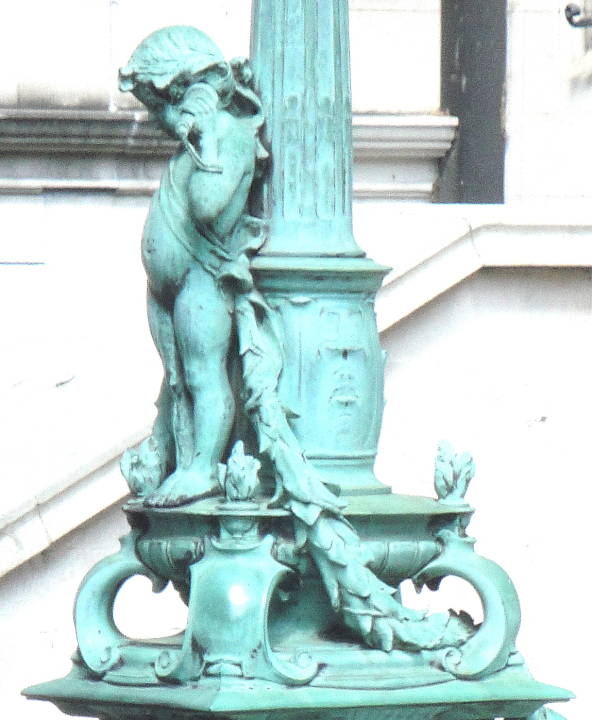

Astor House Lamp Standards, 2 Temple Place, London,” by William Silver Frith, 1850-1924. Bronze. [Click on these images to enlarge them.]
Susan Beattie believes that this charming work, along with the far grander sculpture on the King Charles Street, define “Frith's place in the New Sculpture movement . . . and may fairly be taken to represent his style at its most intimate and individual” (125). Her discussion of the lamp standards deserves quoting in full:
The superficial theme depicted in the lamp standards is modern technology: on their bases pairs of naked baby girls are engrossed in play with a telephone and an electric lighting set. Taking place within this quaint genre setting, however, is a radical investigation of the nature of sculpture and of Frith's favourite theme, the relationship between sculptural and architectural form. The delectable mouldings of the bases with their interlocking curves and planes say as much in architectural terms about sculptural values as the figures themselves. The pressure of the artist's fingers on the surface of the clay is constantly evident in the free and sensuous modelling of the heads and limbs and it is clear that Frith was concerned here to suggest in bronze that synchronisation of thought and action which delighted him in the carving process. [125]
In other words she sees both the Astor House bronze lamp standards and the stone-cut sculpture on the King Charles Street arch in much the same way as David Getsy sees key works of Brock, Thornycroft, Ford, and Gilbert — as works that explore and challenge the very nature of the art of sculpture.



Left and right: One of the children holding an old-fashioned telephone receiver to her head. Center: A galleon surmounts the lamp.
Photographs and caption by Robert Freidus. Formatting and perspective correction by George P. Landow. You may use this image without prior permission for any scholarly or educational purpose as long as you (1) credit the photographer and (2) link your document to this URL in a web document or cite it in a print one.]
Bibliography
Beattie, Susan. The New Sculpture. New Haven: Yale University Press, 1983.
Getsy, David J. Body Doubles: Sculpture in Britain, 1877-1905. New Haven: Yale University Press, 2004.
Last modified 13 August 2011